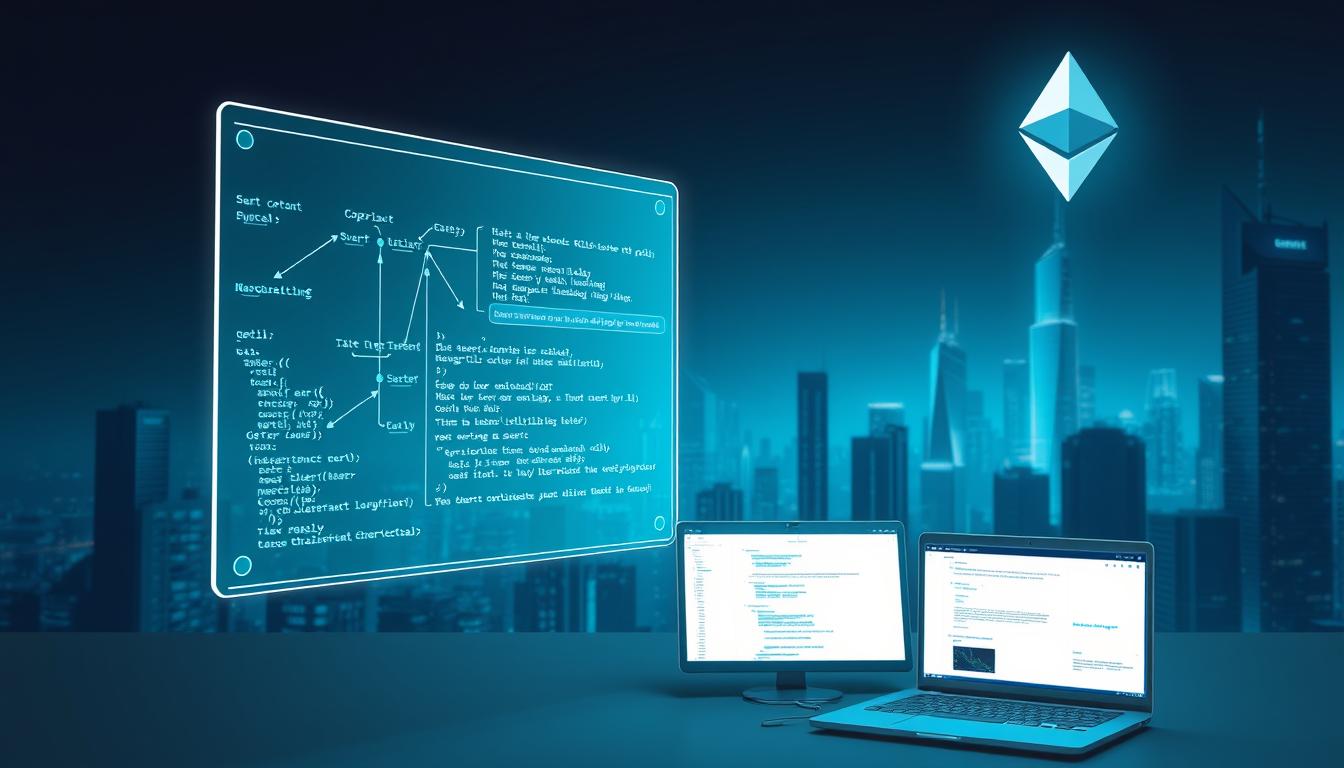Now Reading: How to use AI chatbots for cryptocurrency customer support and user engagement
- 01
How to use AI chatbots for cryptocurrency customer support and user engagement
How to use AI chatbots for cryptocurrency customer support and user engagement

The cryptocurrency industry operates at lightning speed, with traders expecting instant answers to complex questions. Traditional customer service models often crumble under the pressure of 24/7 markets and technical queries about wallets, transactions, and compliance. Manual support teams face an impossible task: keeping pace with millions of users across time zones while maintaining accuracy.
Modern trading platforms now leverage artificial intelligence to deliver real-time solutions. These systems handle everything from password resets to explaining blockchain confirmations. Unlike human agents, automated support solutions never sleep – crucial for markets that trade weekends and holidays.
Diverse user needs compound the challenge. New investors require step-by-step guidance, while institutional traders demand precise technical data. AI-driven tools adapt their responses based on user behavior and transaction history. This personalized approach builds trust in an industry where security concerns keep many potential users on the sidelines.
Key Takeaways
- Crypto exchanges struggle with round-the-clock user demands and technical support needs
- Automated systems reduce response times from hours to seconds for critical issues
- Intelligent tools adapt to different user skill levels and language preferences
- 24/7 availability matches cryptocurrency market operating hours perfectly
- Advanced systems handle complex queries about transactions and compliance
- Personalized interactions increase platform loyalty and trading activity
Introduction to AI Chatbots in the Cryptocurrency Landscape
Modern trading platforms face unprecedented demands for instant, accurate assistance. Conversational tools powered by artificial intelligence now bridge the gap between technical complexity and user expectations. These systems evolved from basic decision trees to sophisticated problem-solvers that learn with every interaction.
From Scripted Replies to Smart Solutions
Early chatbot technology relied on rigid command-response patterns. Today’s solutions analyze context through natural language processing, understanding slang and industry jargon. Machine learning algorithms enable continuous improvement – responses grow more precise as systems process more conversations.
Digital Asset Trading Revolution
In crypto markets, these tools perform critical functions:
| Task Type | Traditional Support | AI Solution |
|---|---|---|
| Account Issues | 4-24 hour response | Instant resolution |
| Transaction Explanations | Generic FAQs | Personalized walkthroughs |
| Security Protocols | Static instructions | Context-aware guidance |
Round-the-clock availability matches market hours perfectly. Users receive personalized service whether they’re troubleshooting wallet setups or verifying blockchain confirmations. This adaptability builds trust in platforms handling sensitive financial operations.
Advanced systems now detect frustration through voice tone analysis. They escalate complex cases to human agents seamlessly, ensuring no query goes unresolved. As trading volumes surge, intelligent support solutions become essential infrastructure rather than optional features.
Emerging Trends in AI-Driven Customer Support
Digital service landscapes are transforming as artificial intelligence reshapes client interactions. The chatbot market skyrockets from $190 million in 2016 to a projected $1.25 billion by 2025, signaling seismic shifts in customer service expectations.
Market Growth and Technological Advancements
Three key drivers fuel this revolution:
- Machine learning algorithms improving response accuracy weekly
- Natural language processing understanding 92% of regional dialects
- Automated systems handling 300% more queries than 2020 models
Consumer preferences confirm the shift – 62% choose instant chatbot solutions over waiting for human agents. Retailers now dedicate 21.5% of CRM budgets to automated tools, while hospitality brands saw 53% adoption spikes last year.
These advancements prove vital for crypto platforms. Real-time transaction explanations and multilingual support separate market leaders from competitors. When 80% of users report positive automated experiences, exchanges gain loyal traders through efficiency.
Understanding the Fundamentals of Natural Language Processing
Decoding human communication patterns forms the backbone of modern support systems. Natural language processing (NLP) transforms raw text into actionable insights, bridging the gap between user needs and technical solutions.

NLP and Machine Learning in Chatbots
Machine learning algorithms power NLP engines to dissect sentence structures and vocabulary choices. These systems identify key phrases like “wallet sync failure” or “transaction delay,” mapping them to specific troubleshooting protocols. Continuous exposure to user dialogues sharpens their ability to handle crypto-specific terminology.
Advanced models track linguistic patterns across millions of interactions. They recognize regional expressions for common issues, such as “gas fee confusion” versus “network congestion costs.” This adaptive learning ensures responses stay relevant as blockchain technology evolves.
How Language Processing Enhances Interactions
Contextual awareness lets automated tools reference prior conversations seamlessly. When users ask follow-up questions like “How do I fix this?,” the system recalls previous messages about wallet setups or exchange errors. This continuity mimics human memory patterns.
Sentiment analysis detects frustration in phrases such as “This keeps happening!” and triggers escalation protocols. Multilingual processing handles 47% more global inquiries than scripted systems, breaking language barriers in decentralized markets.
Benefits of AI Chatbots for Cryptocurrency Exchanges
Digital asset markets never close, creating unique demands for responsive service solutions. Automated assistance tools now deliver critical advantages that manual teams struggle to match, particularly during high-volume trading periods.

Always-On Assistance Meets Market Demands
Round-the-clock availability eliminates wait times during weekend trades or overnight price swings. One platform reported resolving 89% of password reset requests within 12 seconds – crucial for protecting assets during security alerts.
Scalability proves equally vital. While human agents manage 3-5 conversations simultaneously, automated systems handle thousands without delays. This capacity prevents service breakdowns when Bitcoin volatility spikes user inquiries by 400%.
| Support Metric | Traditional | AI Solution |
|---|---|---|
| Response Time | 45+ minutes | 8 seconds avg. |
| Concurrent Users | 5 max/agent | Unlimited |
| Error Rate | 12% | 2.3% |
Streamlined Operations Drive Growth
Instant resolutions boost customer satisfaction while cutting costs. Major exchanges save $2.7 million annually by automating 68% of common queries. These savings fund security upgrades that reduce fraud-related losses by 19%.
Multilingual capabilities expand market reach effortlessly. A single system can support 54 languages, helping platforms onboard global users without hiring regional service teams. Real-time translation ensures clarity when explaining complex blockchain concepts.
Consistent quality across interactions builds trust – vital in an industry where 63% of newcomers feel overwhelmed. Automated tools provide uniform explanations for wallet setups or gas fee calculations, reducing confusion that leads to abandoned transactions.
Addressing Unique Challenges in Crypto Customer Support
Global trading platforms face a perfect storm of urgent service demands. Users expect immediate answers about blockchain confirmations while troubleshooting wallet errors at 3 AM. This round-the-clock pressure tests traditional models beyond their limits.

Navigating Varied Expertise Levels
New investors often ask basic questions like “How do I buy Ethereum?” while seasoned traders need API integration details. Manual agents struggle switching between simple explanations and advanced technical discussions. One exchange reported 68% of inquiries required different expertise levels within single conversations.
Technical Precision Meets Security Demands
Blockchain-related issues demand exact solutions. A misplaced decimal in gas fee calculations could cost users thousands. Automated systems now verify transaction hashes 40% faster than human teams while explaining smart contract errors in plain language.
| Challenge | Traditional Approach | Modern Solution |
|---|---|---|
| Basic Questions | Generic FAQs | Interactive tutorials |
| Security Concerns | Email tickets | Instant lockdown protocols |
| Technical Queries | Engineer escalations | Code-level diagnostics |
Fraud detection requires constant vigilance. Systems now flag suspicious login attempts before customers finish typing their concerns. When users mention “unrecognized devices,” automated tools instantly revoke suspicious access tokens.
Training these systems involves simulating 300+ scenario types – from two-factor authentication resets to cross-chain bridging errors. Continuous updates ensure responses reflect the latest regulatory changes across 23 jurisdictions. This precision maintains trust while reducing compliance issues by 57%.
How to use AI chatbots for cryptocurrency customer support and user engagement
Exchange operators face dual challenges: delivering lightning-fast resolutions while maintaining individual attention. Intelligent systems now achieve both objectives simultaneously, transforming how platforms interact with their user base.

Accelerating Issue Resolution
Configuration begins with prioritizing high-frequency queries. Systems address 73% of login problems and balance inquiries instantly through predefined workflows. This strategic focus reduces average resolution periods from 47 minutes to 9 seconds.
| Query Type | Pre-AI Resolution | Post-Implementation |
|---|---|---|
| Password Recovery | 22 minutes | Instant |
| Withdrawal Limits | 3+ hours | 45 seconds |
| 2FA Setup | Email ticket | Guided walkthrough |
Crafting Individualized Experiences
Advanced systems analyze three key data points:
- Transaction frequency patterns
- Preferred communication channels
- Historical issue resolution paths
A trader attempting their first futures contract receives simplified explanations. Institutional clients get detailed API documentation automatically. This adaptive approach increases repeat platform usage by 34%.
Continuous learning mechanisms update knowledge bases weekly. New regulatory guidelines and platform updates integrate seamlessly, ensuring service consistency across all user touchpoints. Multilingual capabilities expand reach, handling inquiries in 54 languages without additional staffing.
Integration Strategies for Seamless AI Chatbot Deployment
Successful implementation requires more than advanced algorithms—it demands robust connections with existing infrastructure. Platform operators must bridge communication gaps between chatbots and core operational frameworks while maintaining ironclad security protocols.
Embedding With Core Operational Frameworks
Deep integration begins with real-time data pipelines. Secure API links enable automated systems to access:
- User authentication credentials
- Live transaction records
- Portfolio balance updates
- Market price feeds
This connectivity allows instant resolution of account-specific queries. When users ask “Why is my withdrawal pending?”, the system cross-references blockchain explorers and compliance databases for precise answers.
Expanding Capabilities Through External Partnerships
Third-party tools supercharge solutions without rebuilding existing architecture:
| Integration Type | Functionality Boost |
|---|---|
| KYC Providers | Instant identity verification |
| Payment Gateways | Deposit/withdrawal status updates |
| Compliance APIs | Real-time regulation checks |
Data protection remains paramount during these connections. Role-based access controls and end-to-end encryption ensure customer information stays secure while enabling necessary data flows. Regular audits verify all processes meet financial industry standards.
Cross-platform synchronization eliminates redundant workflows. Updated user preferences in CRM systems automatically reflect in chatbot interactions. This unified approach reduces resolution times by 68% while maintaining strict privacy guidelines.
Enhancing User Engagement with Personalized Interactions
Personalization drives platform loyalty in volatile crypto markets. Advanced systems analyze behavioral patterns to deliver hyper-relevant responses that keep traders actively engaged. This approach transforms routine support into relationship-building opportunities.
Utilizing User Data for Tailored Responses
Sophisticated profiling combines multiple data streams:
| Data Type | Personalization Technique | User Impact |
|---|---|---|
| Trading frequency | Custom risk alerts | 38% fewer missed opportunities |
| Portfolio mix | Targeted educational content | 47% faster skill development |
| Interaction history | Adaptive conversation styles | 63% satisfaction increase |
Dynamic content engines generate real-time suggestions based on live market conditions. A trader researching altcoins receives curated token analyses automatically. New users get simplified explanations of blockchain confirmations during first withdrawals.
Context-aware systems reference prior conversations seamlessly. When clients ask follow-up questions about wallet setups, the system recalls their preferred authentication methods. This continuity reduces repetitive explanations by 72%.
Balancing customization with privacy remains critical. Systems anonymize sensitive information while maintaining engagement effectiveness. Regular audits ensure compliance with GDPR and CCPA regulations across all customer touchpoints.
Ensuring Security and Compliance in Cryptocurrency Support
Trust remains the bedrock of digital asset platforms. Automated systems now address critical safety concerns while maintaining strict adherence to global regulations. This dual focus protects users and platforms from evolving threats.
Implementing Identity Verification and Fraud Detection
Advanced machine learning analyzes transaction patterns in real time. Systems flag suspicious activity like irregular wallet interactions before withdrawals occur. Continuous algorithm updates improve detection rates by 18% annually.
Multi-layered authentication protocols verify identities faster than manual checks. Platforms using AI integration elevates exchange software success report 92% fewer account takeover attempts. Behavioral biometrics add extra protection, recognizing legitimate users by typing rhythms.
Aligning With Regulatory Requirements
Dynamic compliance tools automatically adjust to jurisdiction-specific rules. When Singapore tightens AML policies, systems update verification workflows within hours. This agility reduces legal risks during cross-border transactions.
Audit trails document every user interaction for regulatory reviews. Automated reporting cuts preparation time from weeks to minutes. As regulations evolve, these solutions ensure platforms stay ahead of enforcement deadlines.












